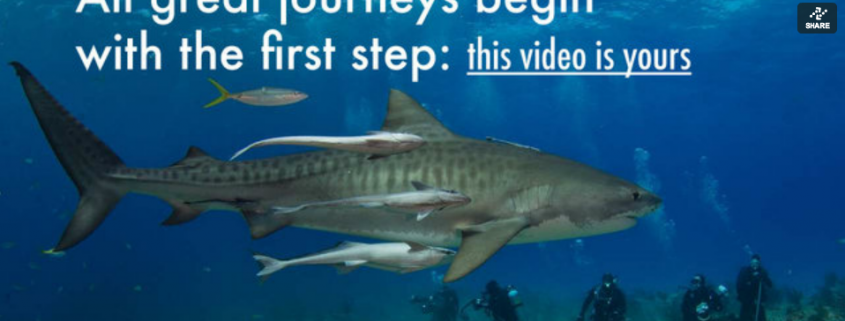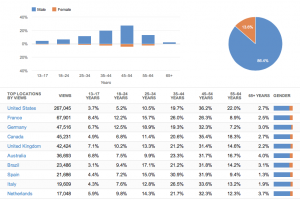Communicating Science Through Film
by Fiona Graham, RJD Graduate Student and Intern
Utilizing film as a media to communicate science can be a powerful way to quickly reach large numbers of the general public in a user friendly way. Whether it’s newly published scientific research, or you’re trying to promote scientific awareness for conservation purposes, choosing to create a short online based film about the topic is a great way to get involved in outreach and education. Promoting science through outreach is extremely important to conservation efforts, as, often, awareness about an issue can be a major barrier in conservation efforts. I see this first hand when conversations with new acquaintances inevitably turn to the “what do you do” small talk, and as a result of my research on sharks for my masters, I frequently find myself talking about shark population declines. It’s not surprising to me anymore that most people have no idea how threatened some shark species are, have never heard of shark fin soup, and don’t know what bycatch is.
Reaching the general public about these issues and new research results can be difficult, especially because non-scientists don’t often read published papers or necessarily speak the language. However, with the online resources we have available now it can be quite easy to quickly reach large numbers of people around the world. Social media platforms like Facebook, Twitter, and Instagram make sharing content simple. Short, online based films are a particularly great way to get across a message because it can be very engaging to the average person. In addition, a good educational film can easily be used again and again as a tool in classrooms around the world. Viewing platforms like YouTube and Vimeo can also give useful insight into view counts and the film’s audience demographic, helping to quantify outreach efforts.
One of the reasons I love being a part of the RJ Dunlap Marine Conservation Program is that the value of outreach and communicating research is recognized and embraced. RJD has a full time media specialist and media focused interns that work with our scientists to communicate their research to the world through online virtual learning experiences, photographs and, of course, film.
In addition to the benefit that a film’s audience can derive from the experience, the process of filming, editing and publishing your own film about your research as a scientist can be a great creative outlet and quite rewarding. There is no room for creativity in science, or showing your personality through publications, however film is another story.
Waterlust, an organization I help run along with a couple other graduate students, is focused on creating these online based films in order to inspire more people to care about our environment. We mix the science and conservation in with sports such as freediving, kiteboarding, and sailing in order to pull more people in that wouldn’t otherwise seek out the science themselves. Taking this route we believe we’re able to reach more people that don’t already care, and hopefully get them to consider their own connection with the ocean, what water means to them, and educate them about issues facing our marine environment in order to inspire respect for these resources. This particular strategy is called entertainment-education (Singhal & Rogers, 1999). At Waterlust we often advocate for scientists becoming their own filmmakers, however collaborations between scientists and filmmakers can also result in successful ways in which to connect research with the public. The point is to get the information out there through an engaging, effective medium: film.
It’s important to note that I’m not at all suggesting that film will ever replace peer reviewed articles in scientific journals, only that it is a great supplement to said publications. In fact, a major barrier to film becoming a more mainstream way in which to communicate science is that it is not peer reviewed. With regards to this, it is important to maintain integrity and stick to true, science based information. That said, film is definitely gaining traction within the scientific world. Support for film is seen through contests such as Ocean180, sponsored by the Florida Center for Ocean Sciences Education Excellence (COSEE Florida), and NSF’s video contest. Video abstracts accompanying papers are becoming more popular, and many scientists are recognizing its value for broader impacts.
REFERENCES
Showstack, R. (2013), Ocean Science Video Challenge Aims to Improve Science Communication, Eos Trans. AGU, 94(40), 351.
Singhal A, Rogers E.M. (1999), Entertainment–education: a communication strategy for social change. Lawrence Erlbaum Associates, Mahwah, NJ






To learn more about Waterlust, please visit waterlust.org or check out our youtube channel at youtube.com/waterlust